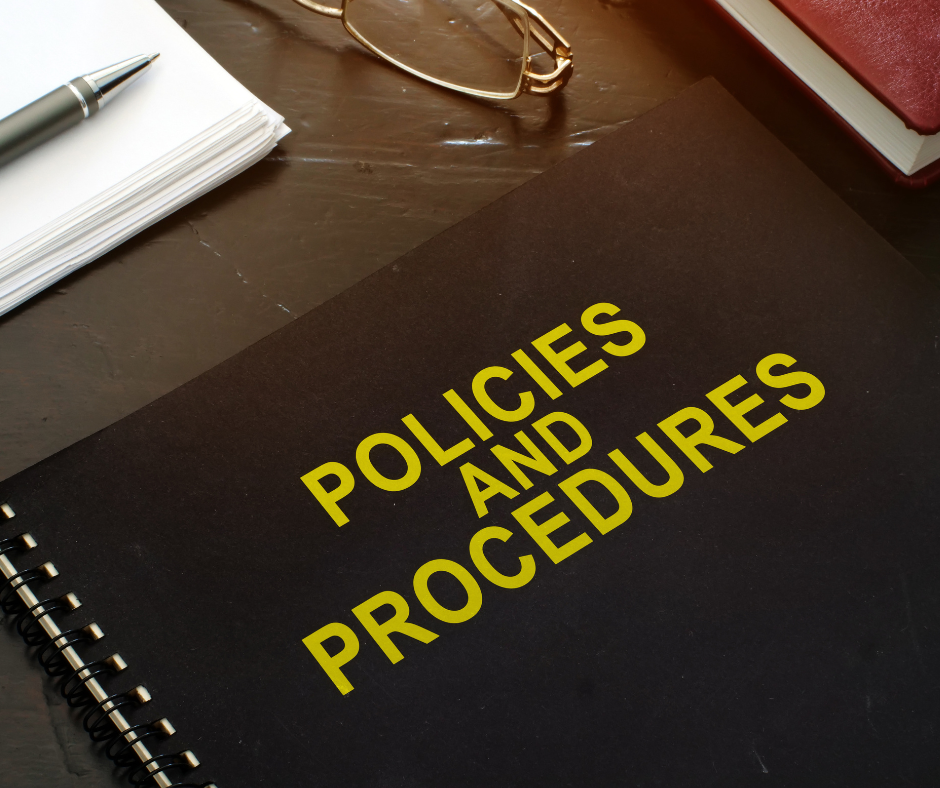
Employee handbooks are essential documents that provide important information and guidelines for employees within an organization.
However, these handbooks should not remain static, as regular updates are necessary to ensure compliance with legal requirements, reflect changes in company policies and procedures, address updates to employee benefits and compensation, and incorporate advancements in communication and technology.
Legal and regulatory changes, such as amendments to employment laws, require updates in employee handbooks to ensure compliance and protect the rights of both employees and the organization.
Adapting company policies and procedures in the handbook is crucial to reflect changes in internal processes, industry standards, and best practices.
Employee benefits and compensation information should also be regularly updated to communicate accurate and up-to-date information to employees.
Furthermore, with the rapid advancements in communication and technology, guidelines in the employee handbook need to be revised to address new modes of communication, data protection protocols, and appropriate technology usage.
By regularly updating employee handbooks, organizations can maintain legal compliance, foster transparency and consistency in company policies, keep employees informed, and create a positive and efficient work environment.
Why Does an Employee Handbook Need Regular Updates?
An employee handbook is crucial for organizations as it provides vital information about company policies, procedures, and expectations. So, why does an employee handbook need regular updates? Let’s explore the reasons:
1. Legal Compliance: Employment laws and regulations are always changing. Regular updates to the employee handbook ensure compliance with the latest legal requirements, preventing potential lawsuits and penalties.
2. Changes in Company Policies: As businesses grow and evolve, policies may need revision. Regular updates to the employee handbook reflect any changes, promoting clarity and consistency across the workforce.
3. Changing Work Environment: The work environment and industry trends constantly change. Regular updates to the employee handbook address new challenges, technological advancements, and work-life balance expectations.
4. Employee Engagement: Updating the employee handbook boosts employee engagement and morale. When employees see their concerns and feedback considered and incorporated, it fosters a sense of inclusion and commitment.
There is a true story that demonstrates the importance of regular updates to an employee handbook. A company failed to update their policies on remote work and faced challenges during the COVID-19 pandemic in effectively managing remote employees and ensuring productivity. However, by learning from this experience and updating their handbook, the company successfully adapted to the new working conditions and provided clear guidelines for remote work.
Regular employee handbook updates are essential to keep policies relevant and compliant with the ever-changing laws and regulations. As workplace dynamics evolve, so do the needs of employees and the company as a whole. By consistently revising and enhancing the handbook, employers can effectively address emerging issues, foster a positive work culture, and promote transparency. A well-maintained employee handbook demonstrates a commitment to the welfare of the workforce and supports the organization’s long-term success.

Legal and Regulatory Changes
When it comes to legal and regulatory changes, businesses must stay informed and ensure compliance. Consider the following factors:
1. Minimum wage laws: Stay updated on changes at the federal, state, and local levels. Adjust your handbook to reflect any increases.
2. Anti-discrimination laws: Regularly review these laws to ensure your policies are in line with requirements. Include clear guidelines on equal employment opportunities.
3. Sexual harassment policies: Regularly update your policies to reflect current laws and regulations. Clearly outline your company’s stance and provide a process for reporting and addressing complaints.
4. Workplace safety regulations: Keep track of changes issued by the Occupational Safety and Health Administration (OSHA). Ensure your handbook includes information on safety protocols and emergency procedures.
5. Privacy and data protection laws: Stay informed about changes in privacy and data protection laws. Include policies on data privacy, employee confidentiality, and information security.
6. Labor law updates: Monitor changes that may impact employee rights, such as family leave policies and employee benefits. Update your handbook accordingly to ensure compliance.
7. Employee rights and obligations: Familiarize yourself with laws regarding breaks, working hours, and employee classification. Clearly communicate these rights and obligations in your handbook.
By regularly reviewing and updating your employee handbook, you can ensure compliance and protect the rights of employees and employers.
What Are the Legal Requirements for Employee Handbooks?
The legal requirements for employee handbooks ensure compliance with employment laws and protect the rights of employees and employers. Here are the key legal requirements for employee handbooks:
- Equal Employment Opportunity (EEO) Policies: Employee handbooks must include policies that prohibit discrimination based on race, gender, age, or disability.
- Anti-Harassment Policies: Employee handbooks should contain clear policies against all forms of harassment, including sexual harassment, and provide procedures for reporting and addressing incidents.
- Wage and Hour Regulations: Employee handbooks should outline the company’s policies regarding minimum wage, overtime pay, meal and rest breaks, and other applicable wage and hour regulations.
- Family and Medical Leave Act (FMLA) Policies: If the company is covered by the FMLA, employee handbooks should include policies outlining employees’ rights to take leave for specific family and medical reasons.
- Occupational Safety and Health Administration (OSHA) Requirements: Employee handbooks should cover the company’s commitment to maintaining a safe and healthy workplace and provide information on reporting workplace injuries and hazards.
- Employee Classification: Employee handbooks should clearly define the employee’s classification as an employee or an independent contractor to comply with tax and labor laws.
- Privacy and Confidentiality Policies: Employee handbooks should include policies on employee privacy rights and guidelines for handling and protecting confidential information.
- Employment Separation Policies: Employee handbooks should address procedures for termination, resignation, and the return of company property upon separation from employment.
Meeting these legal requirements in employee handbooks helps establish clear expectations and guidelines, promoting a safe and fair work environment and reducing the risk of legal disputes.
How Do Changes in Employment Laws Impact Employee Handbooks?
Changes in employment laws have a significant impact on employee handbooks. It is important for companies to stay up-to-date with these changes and update their handbooks accordingly to ensure compliance and protect the rights of both employees and employers.
One major effect is on employee rights and protections. When there are changes in employment laws, new rights may be introduced or existing ones may be strengthened. For instance, if there is an increase in the minimum wage due to a new law, the employee handbook should reflect this change and make sure that employees are aware of their entitlements.
Likewise, changes in employment laws can also affect workplace safety policies and procedures. If there are new regulations that enhance safety standards, the employee handbook should provide employees with the necessary information and instructions to ensure their well-being at work.
In addition, changes in employment laws can impact how workplace disputes and conflicts are resolved. For example, if a new law promotes alternative dispute resolution methods, the employee handbook should include updated conflict resolution procedures.
Regularly reviewing and updating employee handbooks in response to changes in employment laws is crucial. This ensures that the information in the handbook is accurate, relevant, and in compliance with the law. It also provides employees with the necessary information to understand their rights and obligations in the workplace.
What Are Some Common Legal Changes that May Require Updates in Employee Handbooks?
Common Legal Changes that May Require Updates in Employee Handbooks:
In order to comply with evolving employment laws, employee handbooks must be updated. For instance, changes in minimum wage may necessitate updates to the compensation section. It is also crucial to address changes in anti-discrimination regulations by including revised policies on equal opportunity and non-discrimination. Additionally, the handbook should reflect changes in health and safety regulations by providing updated guidelines on new safety protocols. Changes in laws regarding leave entitlements, such as parental leave, sick leave, or vacation time, should also be incorporated into the handbooks. To protect sensitive information, employee handbooks should incorporate changes in data privacy and cybersecurity legislation, including guidelines on handling confidential information and reporting data breaches.

Company Policy and Procedure Updates
When it comes to company policy and procedure updates, businesses must stay up-to-date and ensure employees are aware of changes. Here are key considerations:
1. Communication: Clear and timely communication is crucial when implementing updates. Inform employees through emails, meetings, and internal platforms.
2. Training and Education: Provide comprehensive training sessions for employees regarding updates. Ensure everyone understands and knows how to adhere to them.
3. Documentation: Update the employee handbook and relevant documents to reflect the latest policies and procedures. Make them easily accessible for reference.
4. Compliance: Emphasize the importance of adhering to the updated policies and procedures. Clearly communicate consequences for non-compliance.
5. Feedback and Evaluation: Regularly seek employee feedback on the effectiveness of the updates. Implement necessary revisions for continuous improvement.
Why Should Company Policies and Procedures in the Employee Handbook Be Updated?
Regularly updating company policies and procedures in the employee handbook is crucial to ensure compliance with changing laws and regulations. By doing so, companies can maintain a safe and inclusive work environment that aligns with their current practices and goals. Moreover, these updates are necessary to keep up with evolving legal requirements, which can have an impact on various aspects of the workplace, including anti-discrimination policies, employee leave provisions, privacy policies, and safety protocols. Updating the handbook not only ensures that company policies align with current laws but also serves to protect both employees and the organization.
In addition, updating company policies and procedures enhances transparency and communication within the company. By providing employees with up-to-date information on company expectations, procedures, and guidelines, misunderstandings can be avoided, and a fair and consistent work environment can be promoted.
Furthermore, updating the handbook allows companies to cultivate a positive culture and address emerging issues. This process reflects changes in the company’s values, goals, and practices. For example, if a company implements a new remote work policy or revises its performance evaluation process, these updates should be clearly communicated in the handbook.
To ensure that the update process takes into consideration the voices and needs of employees, it is beneficial to involve key stakeholders and seek feedback from employees. This approach will help in creating company policies and procedures that effectively meet the requirements of all parties involved.
Every company should have an employee handbook required by law. This essential document outlines the rights, responsibilities, and policies that both employees and employers must adhere to. It serves as a crucial reference point for understanding the company’s rules and regulations, ensuring a harmonious and legally compliant work environment. Failure to provide a comprehensive employee handbook could lead to legal complications and potential penalties.
How Do Changes in Company Policies Impact Employee Handbooks?
Changes in company policies have a significant impact on employee handbooks. Ensuring compliance and providing employees with clear information about their roles and responsibilities requires updating the handbook with current policies. Maintaining consistency and fostering understanding of expectations in the workplace are key aspects of having updated handbooks.
Company policy changes also have to address legal and regulatory requirements, which make handbook updates necessary. The handbook serves as a point of reference for employees, offering them the most up-to-date information on their rights, benefits, and protections. By prioritizing the well-being of employees and demonstrating compliance, companies keep the handbook current.
Moreover, policy updates reflect changes in company culture or values. Revisions may aim to promote diversity and inclusion, enhance work-life balance, or address industry trends. By incorporating these changes into the handbook, employees gain awareness of the company’s values and can align their behavior accordingly.
What Are Some Common Policy and Procedure Changes that May Require Updates in Employee Handbooks?
Common policy and procedure changes that may require updates in employee handbooks include workplace safety protocol changes, attendance and leave policy updates, disciplinary procedure revisions, anti-discrimination and harassment policy modifications, and technology and data security policy changes.
Regularly reviewing and updating employee handbooks is essential to remain accurate, compliant with laws, and in line with company goals and values. This ensures effective communication, a positive work environment, and reduced legal risks.

Employee Benefits and Compensation Changes
Employee benefits and compensation changes are crucial for employee satisfaction and motivation. Here are key considerations for employers:
– Salary adjustments: Employers should review and adjust salaries to ensure competitiveness. Research salary ranges for similar positions for fair employee benefits and compensation changes.
– Health insurance benefits: Providing comprehensive coverage is essential for attracting and retaining top talent. Review and update plans to meet employee needs and legal requirements for employee benefits and compensation changes.
– Retirement plans: Offering savings plans like a 401(k) or pension can help secure employees’ financial future. Consider matching employer contributions to encourage saving for employee benefits and compensation changes.
– Paid time off: Evaluate and update policies for vacation, sick leave, and parental leave. Offer flexibility for work-life balance and employee benefits and compensation changes.
– Wellness programs: Implementing programs can boost well-being and productivity. Consider gym memberships, health screenings, or stress management initiatives for employee benefits and compensation changes.
Fact: Companies with competitive employee benefits and compensation changes have higher retention rates and attract top talent.
Why Should Employee Benefits and Compensation Information Be Updated in the Employee Handbook?
Employee benefits and compensation information should be regularly updated in the employee handbook in order to ensure that it complies with laws and regulations. This is crucial to avoid legal issues or penalties. Furthermore, updating this information demonstrates transparency and builds trust with employees, fostering a positive work environment and maintaining employee satisfaction.
It is also important to update the handbook to inform employees about any changes in benefits and compensation packages that may occur due to factors like company growth or industry standards, clarifying their entitlements.
Additionally, regularly updating benefits and compensation information in the handbook is crucial for attracting and retaining top talent, as competitive packages are essential in this regard.
Lastly, updating this information provides accurate and consistent information, reducing the likelihood of misconceptions or disputes among employees.
Crafting one of the best employee handbooks is vital for a company’s growth and reputation. A thoughtfully constructed handbook not only outlines the standard policies and procedures but also reflects the company’s values, vision, and unique culture. By offering clear guidelines and expectations, the best employee handbooks foster a sense of community and empower employees to thrive. Investing in creating a standout employee handbook demonstrates a commitment to employee satisfaction and retention, making it an invaluable tool for attracting top talent.
How Do Changes in Employee Benefits and Compensation Impact Employee Handbooks?
Changes in employee benefits and compensation can have a significant impact on employee handbooks. Here are some key ways in which these changes affect the content and relevance of employee handbooks:
1. Employee expectations: Employee handbooks need to clearly communicate updates in benefits and compensation. This ensures employees have accurate information about their entitlements such as health insurance, retirement plans, bonuses, and other forms of compensation.
2. Compliance with laws and regulations: Employee handbooks must reflect changes in benefits and compensation driven by legal requirements or regulatory updates. Examples may include adjustments to minimum wage rates, overtime rules, or tax laws affecting employee benefits.
3. Clarity and consistency: Updating employee benefits and compensation information in the handbook maintains clarity and consistency in company policies. Employees can refer to the handbook for accurate information, reducing confusion or discrepancies between verbal communication and written policies.
4. Employee satisfaction and morale: Changes in benefits and compensation directly impact employee satisfaction and morale. By clearly outlining these changes in the handbook, companies can manage employee expectations and ensure transparency. This can contribute to a positive work environment and improved employee engagement.
5. Retention and recruitment: Competitive benefits and compensation packages are crucial in attracting and retaining talent. By highlighting updates in the handbook, companies can effectively communicate the value of their offerings to current and potential employees. This enhances the company’s reputation as an employer of choice.
What Are Some Common Benefits and Compensation Changes that May Require Updates in Employee Handbooks?
Employee handbooks are essential documents that provide employees with information about company policies, procedures, and benefits. It is crucial for businesses to regularly update their handbooks to reflect changes in benefits and compensation. Here are some common changes that may require updates:
- Salary adjustments: Companies may increase or decrease salaries based on market trends, performance reviews, or finances. The handbook should reflect any changes in pay structures.
- Bonus programs: If a company introduces or modifies bonus programs, the handbook should include details about eligibility, payout schedules, and performance metrics.
- Retirement plans: Changes in retirement plans, such as new plans, contribution limits, or investment options, should be clearly communicated in the handbook.
- Health insurance and other benefits: Updates to health insurance plans, including coverage, deductibles, or co-pays, should be included. Additionally, changes to vacation policies, parental leave, or wellness programs should be communicated.
- Compensation policies: Changes in the company’s approach to compensation, like pay-for-performance systems or commission structures, should be outlined.
- Stock options or equity programs: If a company offers stock options or equity programs, any updates or changes should be communicated in the handbook.
Regularly updating the handbook ensures employees have accurate and up-to-date information, promoting transparency and fair compensation packages.

Communication and Technology Updates
Effective communication and staying up to date with technology are crucial for success in today’s fast-paced business environment. Here are some important considerations for communication and technology updates in the workplace:
- Utilize collaboration tools: Implement reliable and user-friendly collaboration tools like Slack or Microsoft Teams. These platforms enable real-time messaging, file sharing, and project management, boosting productivity and efficiency among team members.
- Embrace video conferencing: With remote work and global teams on the rise, video conferencing has become essential. Platforms like Zoom or Google Meet allow face-to-face communication, fostering stronger connections and better collaboration. Ensure well-equipped conference rooms for virtual meetings to ensure smooth video and audio quality.
- Implement cybersecurity measures: Technology advances, and so do cyber threats. Invest in robust cybersecurity measures to protect sensitive company information and data. Regularly train employees on the latest threats and best practices.
- Stay updated with software and systems: Regularly update software applications and systems to benefit from new features, bug fixes, and enhanced security. Establish a process to track updates and implement them promptly.
Fact: According to a study by Deloitte, organizations that effectively communicate and leverage technology have 47% higher total returns to shareholders over a five-year period compared to less advanced counterparts.
Why Should Communication and Technology Guidelines Be Updated in the Employee Handbook?
Communication and technology guidelines in the employee handbook should be regularly updated to equip employees with tools and knowledge for the digital landscape.
1. Stay up-to-date with technology: It is important to update the guidelines in order to reflect the latest tools, software, and platforms used within the organization. This ensures that employees have access to the necessary resources and are able to follow the best practices for efficient communication.
2. Enhance productivity: By updating the guidelines, processes can be streamlined, collaboration can be improved, and productivity can be boosted. It is essential to incorporate new communication tools or platforms that facilitate effective communication and collaboration, leading to increased productivity.
3. Ensure data security: Updating the guidelines is crucial in order to address potential cybersecurity risks, educate employees on the best practices for data security, and protect sensitive information.
4. Adapt to remote work: It is important to update the guidelines to provide employees with the necessary guidelines and tools for effective remote work. This will ensure smooth communication and collaboration regardless of location.
5. Facilitate employee engagement: Effective communication and technology tools enhance engagement by providing platforms for feedback, recognition, and idea-sharing. Regularly updating the guidelines ensures access to the latest tools and platforms that promote a positive work culture.
6. Keep pace with industry trends: Updating the employee handbook is important in order to align communication strategies with the latest industry trends. This enables employees to stay current and adapt to changing market demands.
How Do Changes in Communication and Technology Impact Employee Handbooks?
Changes in communication and technology have a significant impact on employee handbooks. It is crucial to incorporate the following key points:
1. Updated Guidelines: Ensure that the employee handbooks are updated with the latest communication and technology guidelines to align with current trends and practices. This will provide employees with clear instructions on how to effectively and safely use company communication tools and technology resources.
2. Improved Efficiency: Embrace changes in communication and technology as they can enhance work efficiency. For instance, implementing collaboration software or project management tools facilitates seamless communication and promotes teamwork. Employee handbooks should offer guidance on utilizing these tools to optimize productivity.
3. Cybersecurity Measures: The increasing reliance on technology brings about heightened cybersecurity risks. To address this, employee handbooks should outline security protocols and best practices to mitigate data breaches, phishing attacks, and other cyber threats. Regular updates to these guidelines are vital to address evolving risks adequately.
4. Remote Work Policies: Advances in communication and technology have paved the way for remote work arrangements. Employee handbooks need to address remote work policies, including guidelines for virtual meetings, digital collaboration tools, and time tracking procedures. Ensuring these policies are up to date enables employees to understand their expectations and responsibilities in a remote work environment.
5. Training and Development: The changes in communication and technology may require employees to acquire new skills and knowledge. Employee handbooks should outline opportunities for training and development programs related to communication tools, software updates, and emerging technologies.
Pro-tip: It is essential to regularly review and update the communication and technology section of your employee handbook to keep up with evolving practices and technologies. This guarantees that employees have access to the most current information and guidelines to navigate the ever-changing digital landscape.
What Are Some Common Communication and Technology Changes that May Require Updates in Employee Handbooks?
To ensure that employee handbooks remain up-to-date and relevant, it is important to incorporate common communication and technology changes. These updates are essential in providing employees with the necessary information to effectively navigate the modern workplace.
One aspect that may require updates is communication channels. As technology advances, companies often adopt new communication tools and platforms. This may involve adding instant messaging apps, videoconferencing software, or collaboration tools to enhance productivity.
Another area that may need revisions is remote work policies. The rise of remote work has led to the need for guidelines in employee handbooks. This may include expectations for remote work, communication protocols, and measures to ensure data security.
As social media plays a significant role in the workplace, it is crucial for employee handbooks to address appropriate use of social media platforms. This includes guidelines for professional conduct, maintaining confidentiality, and avoiding conflicts of interest.
With the increasing use of personal devices in the workplace, technology usage policies may require updates. These policies can cover topics such as acceptable use of personal devices, data protection measures, and cybersecurity guidelines.
Data privacy and security are also important considerations. Employee handbooks may need updates to address evolving data privacy regulations and company practices regarding sensitive information. Guidelines on data protection measures, including password management and encryption, should be included.
Many organizations allow employees to use their personal devices for work purposes. Therefore, updates to employee handbooks may be necessary to establish guidelines for Bring Your Own Device (BYOD) policies. This includes implementing security measures, establishing support policies, and ensuring the protection of company data.
By regularly updating employee handbooks to incorporate these common communication and technology changes, companies can ensure that employees have the necessary information to navigate the modern workplace effectively and securely.
Frequently Asked Questions
FAQ 1: What federal laws should employers consider when updating their employee handbook?
Employers should consider federal laws such as Equal Employment Opportunity (EEO) policies, wage and hour laws, and laws related to discrimination and harassment. Adhering to these laws is crucial to maintain compliance and avoid legal consequences.
FAQ 2: How can employee handbooks help companies expand into new markets?
Employee handbooks can help companies expand into new markets by providing a standardized set of policies and expectations for employees. This ensures consistent practices across different locations and helps maintain the company’s vision and culture as it enters new markets.
FAQ 3: Can disciplinary policies be included in an employee handbook?
Yes, disciplinary policies can be included in an employee handbook. These policies outline the consequences for misconduct or policy violations and help maintain a positive work environment. Clear and fair disciplinary policies can also protect the company from legal claims by providing a documented process for addressing employee issues.
FAQ 4: Should employers consult employment attorneys when updating their employee handbook?
It is advisable for employers to consult employment attorneys when updating their employee handbook. Employment attorneys have expertise in employment laws and can help ensure that the handbook is in compliance with legal requirements, reducing the risk of legal issues and providing a legal buffer zone for the company.
FAQ 5: How should dress code policies be addressed in an employee handbook?
Dress code policies should be clearly outlined in the employee handbook to avoid discrimination claims. Employers should be aware of local laws regarding protected classes and ensure that their dress code policies are fair and inclusive. Employers should also be willing to make reasonable accommodations for religious practices and should review their policies periodically to address societal issues such as natural hairstyles.
FAQ 6: What role do employee handbooks play in risk reduction and risk management?
Employee handbooks play a crucial role in risk reduction and risk management. They establish clear expectations and policies for employees, reducing the likelihood of misunderstandings or negative consequences. Handbooks also provide a layer of protection for the company by documenting policies, procedures, and guidelines that can be relied upon in the event of legal claims or disputes.